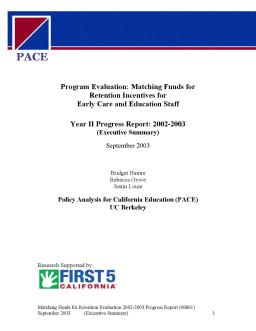Views from the 2019 PACE/USC Rossier Poll
Published
Summary
With a new governor, state superintendent and legislators in Sacramento and a diminished federal role in education, there is an opportunity for California’s leaders to take stock of recent educational reforms and make necessary improvements. There are also a host of new and looming issues in K-12 and higher education. As California’s leaders confront these and other issues, where do California voters, including parents, stand on education and education policy? The newest edition of the USC Rossier/PACE Poll shares voter perspectives on a wide range of education issues.
Five Years Later
Published
Summary
This report commemorates the fifth anniversary of the Getting Down to Facts project, which sought to provide a thorough and reliable analysis of the critical challenges facing California’s education system as the necessary basis for an informed discussion of policy changes aimed at improving the performance of California schools and students. The report focuses on the four key issues that received emphasis in the Getting Down to Facts studies: governance, finance, personnel, and data systems.
Year Two Progress Report, 2002–03—Executive Summary
Published
Summary
This report highlights findings from a 2002-03 progress report on First 5 California's childcare retention incentive programs, aimed at improving retention and increasing training among early care and education staff. Data were collected from ten counties through a phone survey of participants and site visits. Initial findings related to program design and implementation, program participation, training and professional development, and retention are summarized.
Year 1—Qualitative Implementation Study
Published
Summary
This report provides guidance on implementing childcare retention initiatives based on Alameda County’s Child Development Corps program. PACE conducted focus groups with stakeholders to gather feedback on the planning and implementation process. The program saw increased commitment from providers to their profession and seeking training opportunities, but challenges remain with fitting permit requirements to family providers and relevance of courses.



